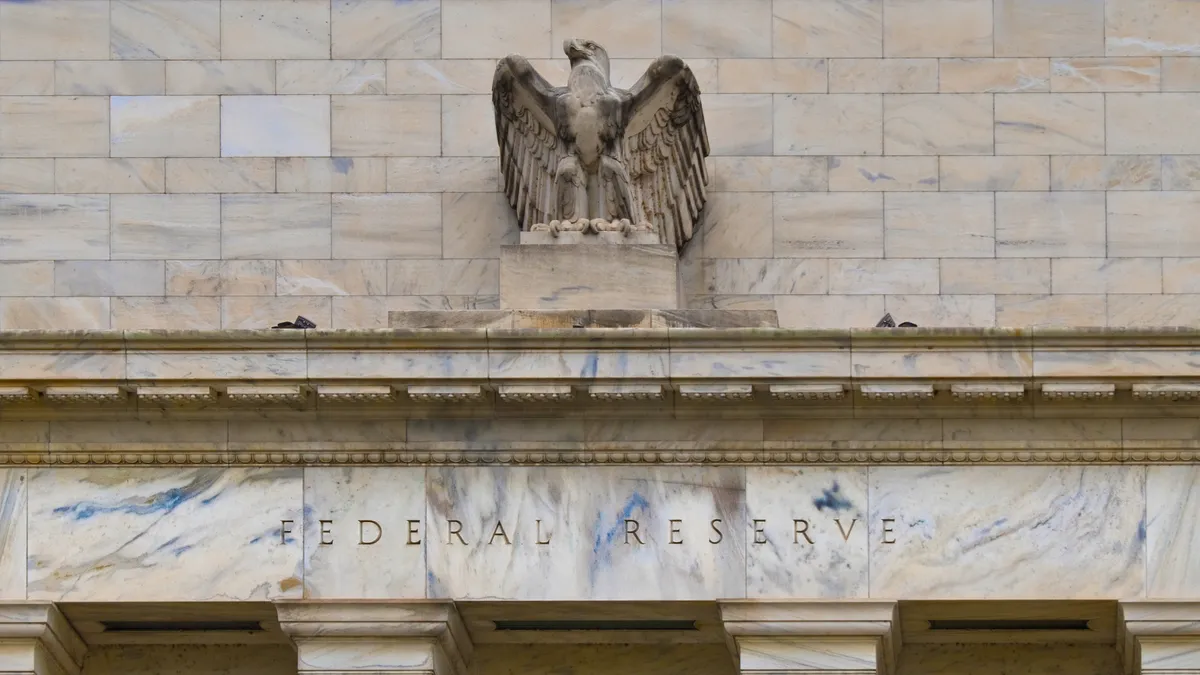Dive Brief:
- Forecasts for an imminent decline in borrowing costs are probably too optimistic, former Treasury Secretary Larry Summers said Tuesday, noting that in the near term the Federal Reserve’s most aggressive tightening in four decades may not slow the economy enough to cool inflation to the central bank’s 2% target.
- “There’s no compelling warrant for easing monetary policy, and markets should be getting used to rates in current ranges for the foreseeable future,” Summers said during a webcast hosted by the Economic Club of New York.
- The so-called neutral rate of interest — which neither spurs nor curbs demand — is probably 4.5% rather than the 2.6% estimate by Fed officials, Summers said. “If the neutral rate at present is in the range of 4.5%, then monetary policy is not substantially restrictive.”
Dive Insight:
Price pressures, housing starts, employment and other signals imply that the economy is slowing after defying recession predictions last year and growing at a 1.6% annual rate during the first quarter.
Job openings in April slumped to the lowest level in more than three years, the Bureau of Labor Statistics said Tuesday, as companies favor scaling back hiring rather than laying off workers.
Gross domestic product during the second quarter will probably grow at a 1.8% annual rate, the Atlanta Fed said Monday in its GDPNow forecast, downgrading its estimate from 2.7% on Friday.
“A slowdown is coming, but I don’t see a very large recession,” Glenn Hubbard, former chairman of the president’s Council of Economic Advisers, said during the webcast. “Planes don’t stay in the sky forever — they land and they either land softly or not softly, but they do land.”
During the second and third quarters the annual pace of economic growth will likely sink below 1%, burdened by high inflation, rising household debt, depleted pandemic-period savings and the highest borrowing costs in two decades, the Conference Board said last month, citing a decline in its Leading Economic Index.
Yet even with the economy cooling, the Fed is not on track to curb inflation to its goal, Hubbard and Summers said.
“Inflation at the moment is stuck well above the Fed’s 2% inflation target,” Hubbard said.
The so-called core consumer price index gained 0.3% in April compared with 0.4% during the prior month, and eased to 3.6% on an annual basis from 3.8% in March, the Bureau of Labor Statistics said last month.
During the first quarter, however, inflation exceeded expectations and slightly reversed the progress made during the second half of last year.
“I agree with you that we’re not at a 2% inflation target and I don’t think we’re on a convincing trajectory to the 2% inflation target,” Summers told Hubbard.
Mixed economic data and the jagged trend of inflation has spurred volatility in estimates for the start and extent of Fed cuts to the benchmark interest rate.
“Expectations [for rate reductions] have been on a rollercoaster ride over the past 12 months, going from six cuts to two cuts to six cuts and now 1.5 cuts,” Torsten Slok, chief economist at Apollo Global Management, said in an email Tuesday.
The central bank since July has held the federal funds rate at a 23-year high between 5.25% and 5.5%. Fed officials are scheduled to meet to discuss monetary policy June 11-12.












